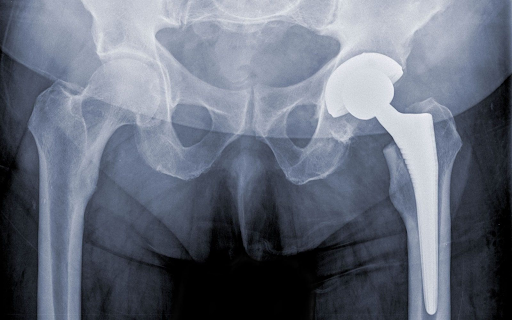Hip replacement surgery has become one of the most reliable orthopedic procedures for people suffering from chronic hip pain, limited movement, or severe joint damage. Over the years, advancements in surgical techniques, implants, and recovery programs have made the procedure safer, faster, and more patient-friendly. This detailed guide explains the complete journey — from understanding the condition to surgery preparation, operation steps, recovery, results, and more — in a way that patients and families can easily understand.
Understanding Why Hip Replacement Is Needed
Hip replacement is usually recommended when the hip joint becomes damaged to a point where movement becomes painful and normal activities become difficult. Most patients choose surgery after conservative treatments like pain medicines, physiotherapy, lifestyle changes, or injections stop providing relief.
The most common reasons include:
- Severe arthritis (osteoarthritis or rheumatoid arthritis)
- Hip fractures due to injury or accidents
- Wear and tear due to aging
- Bone diseases
- Structural deformities in the hip joint
Patients usually report symptoms like constant groin or thigh pain, stiffness, difficulty in walking, climbing stairs, or pain even while resting. When these limitations start affecting daily life, doctors often advise considering hip replacement surgery.
Types of Hip Replacement Surgery
Doctors recommend the type of hip surgery based on the patient’s age, condition, bone strength, and medical history. The major types include:
1. Total Hip Replacement (THR)
In this procedure, both the damaged ball (femoral head) and the socket (acetabulum) are replaced with artificial implants. It is the most common type of hip replacement.
2. Partial Hip Replacement
Only the ball portion of the hip joint is replaced. This approach is usually chosen for fractures rather than arthritis.
3. Minimally Invasive Hip Replacement
With smaller incisions and less tissue damage, this method allows faster recovery and less postoperative pain.
4. Hip Resurfacing
Instead of removing the entire femoral head, the surgeon resurfaces it with a metal cap. It is mainly suggested for younger patients with strong bones.
Pre-Surgery Evaluation and Preparation
Before the surgery, doctors follow a structured evaluation process to ensure patient safety. This includes:
- Detailed physical examination
- Medical history review
- X-rays, MRI, or CT scans
- Blood tests
- Cardiac evaluation (especially for older patients)
Patients are also advised to:
- Stop smoking and alcohol consumption to improve recovery
- Discuss current medication usage
- Improve leg strength through physiotherapy
- Arrange help at home during the initial recovery days
Some patients may also need weight management to reduce strain on the new hip joint.
Step-by-Step: How Hip Replacement Surgery Is Performed
1. Anesthesia
The procedure usually takes 1–2 hours and may use either:
- General anesthesia (patient is fully asleep)
- Spinal anesthesia (lower body is numbed but patient may remain awake)
2. Incision and Joint Access
The surgeon makes an incision — either in the front, back, or side of the hip — depending on the chosen technique.
3. Removal of the Damaged Joint
The damaged femoral head is removed, and the acetabulum (hip socket) is cleaned and prepared.
4. Placement of Implants
Artificial components made of metal, ceramic, or high-grade plastic are inserted:
- A new socket is secured in place
- A stem is fitted inside the femur
- A new ball attachment is placed on top
5. Closure
Once the implant is tested for proper movement and stability, the surgeon closes the incision with sutures, staples, or surgical glue.
Hospital Stay and Immediate Recovery
After surgery, patients are moved to recovery where vitals are monitored. Pain management and mobility support begin soon after. Most patients can start standing and walking with support within 24 hours, depending on the surgical approach.
During the hospital stay, patients receive:
- Medications for pain and infection prevention
- Physiotherapy and walking training
- Breathing exercises to reduce anesthesia effects
- Guidance on post-operative care
Typically, patients stay 2–5 days in the hospital, depending on their health and recovery progress.
Helpful: Bilateral Hip Replacement Surgery Cost in India
Recovery at Home: What Patients Should Expect
The real recovery begins after discharge. Patients usually experience significant pain improvement within weeks as movement becomes easier. Doctors usually provide:
- A physiotherapy plan to strengthen hip muscles
- Walking aids like walkers or canes for a short time
- Sleeping and sitting position recommendations
- A list of activities to avoid
General Recovery Timeline
- 1–2 weeks: Patients can walk short distances indoors.
- 4–6 weeks: Most can resume normal household activities.
- 8–12 weeks: Many patients start returning to light work.
- 3–6 months: Full recovery and return to routine living.
Factors like age, fitness level, and overall health influence recovery speed. Patients who continue physiotherapy regularly often experience better long-term mobility.
Possible Risks and Complications
Although hip replacement is considered a highly successful procedure, doctors always inform patients of risks such as:
- Infection
- Blood clots
- Implant loosening
- Leg length difference
- Dislocation (rare with newer techniques)
However, choosing an experienced orthopedic surgeon and following post-operative instructions minimizes these risks.
Expected Results and Quality of Life After Surgery
Most patients experience:
- Significant reduction in pain
- Improved mobility
- Ability to return to everyday activities
- Better sleep and comfort
- Renewed confidence and independence
Modern implants can last 15–25 years or more, depending on lifestyle, weight, and activity levels.
Cost Consideration for Patients
For patients who plan surgeries based on budget and location, many choose India because of the expertise of surgeons and high medical standards. Procedures are affordable compared to many other countries, and hospitals offer comprehensive care packages. Many factors, including type of implant, surgery technique, and hospital selection influence the Hip Replacement Surgery Cost In India, and patients usually discuss options in detail during consultation.
Final Thoughts
Hip replacement surgery is a life-changing procedure that restores mobility, reduces pain, and helps patients return to an active lifestyle. With the right hospital, skilled surgical team, and a committed rehabilitation plan, patients can expect excellent long-term outcomes. Understanding each step of the process — from preparation to recovery — helps individuals feel confident and well-informed throughout their treatment journey.















